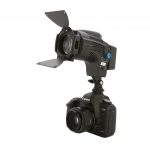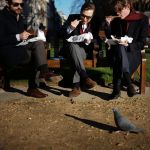Could you capture something that is traveling at 17,000mph (28,000km/h)? No, us neither. On 4th February 2017, French astronomer Thierry Legault achieved just that.
Legault recorded the International Space Station (ISS), expedition 50, as it passed through the middle of the first-quarter moon.
Using Calsky (www.calsky.com), Legault calculated when the ISS would appear in front of the moon when viewed from near Rouen - the home city of current ISS resident, and fellow Frenchman, Thomas Pesquet.
Equipped with Celestron’s flagship SCT telescope the C14 Edge HD, a Sony a7s and an Atomos Shogun 4k recorder, Legault’s video shows in detail the craters and mountains of the moon.
Legault has been able to slow down by 10x the 0.4 seconds of footage as the ISS travels in front of the moon across the image. Consequently, the main modules and solar panels of the ISS are clearly visible in several points along the flight path.
To watch the video in full, check out Thierry Legault’s YouTube page.
The Celestron C14 telescope offers an equivalent focal length of up to 3910mm with an aperture of 356mm, while Sony’s a7s is well known for its high ISO sensitivity, producing minimal noise in low light.
Using his vast experience and with those two bits of kit combined, the quality of Legault’s image of the moon is quite spectacular.
Continuous improvements in camera kit, especially in high resolution 4K video capture, make viewing and capturing the night skies at high magnification more possible than ever before for amateur astronomers.
Thierry Legault has built up a name for himself in the astronomy world, even having an asteroid named after himself (to be precise, the asteroid 19458 was named Legault by the International Astronomical Union).
After more than 20 years experience, Legault has written two books and boasts an impressive body of images that can be found on his website. We look forward to seeing more of his images in the future.







